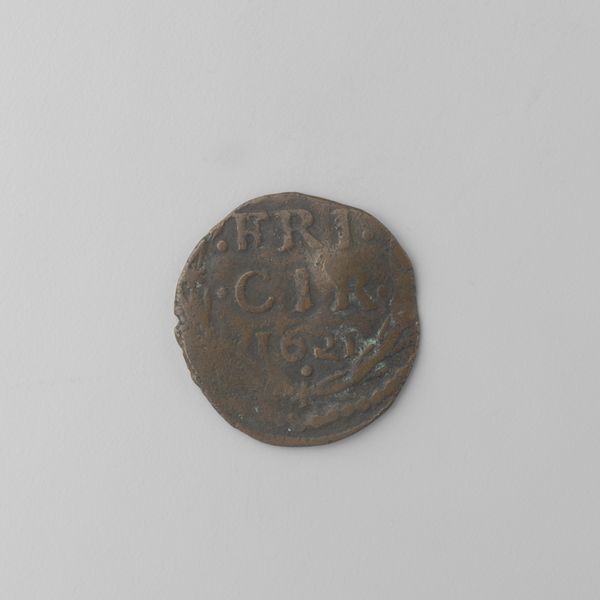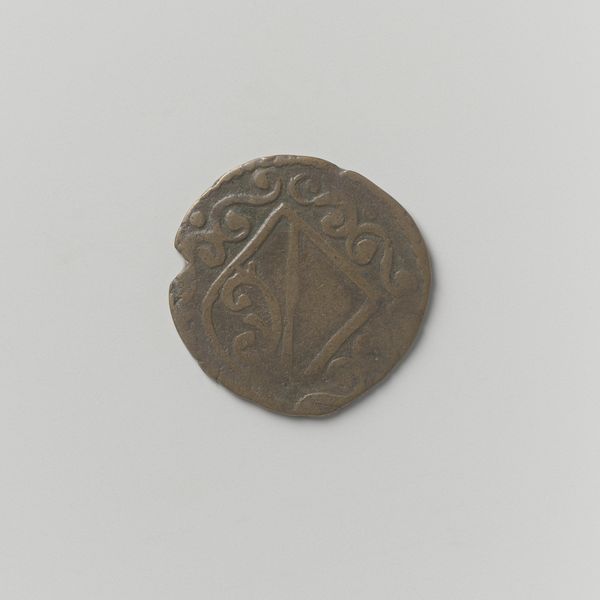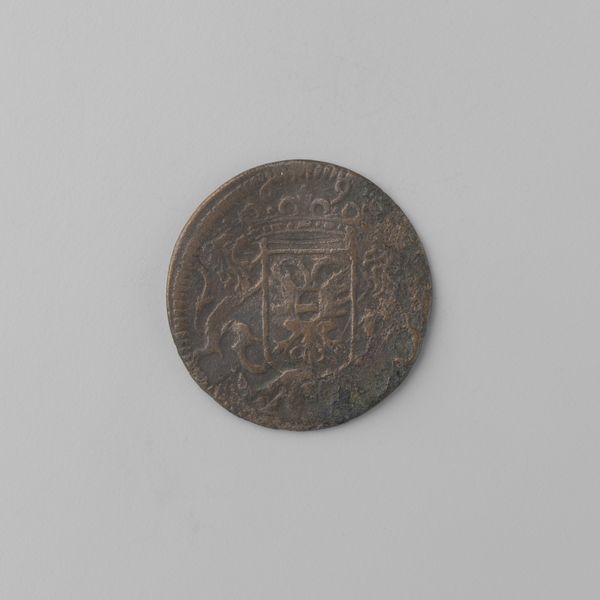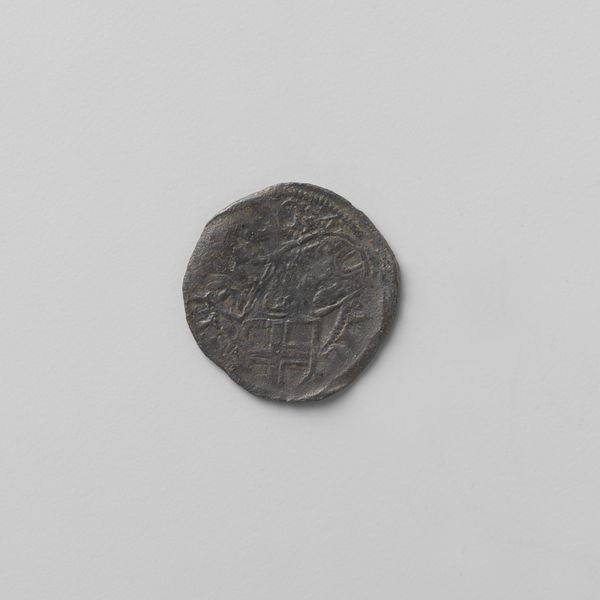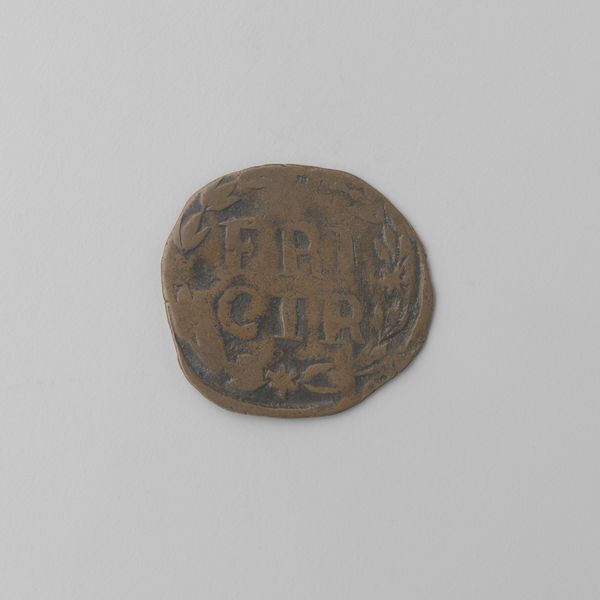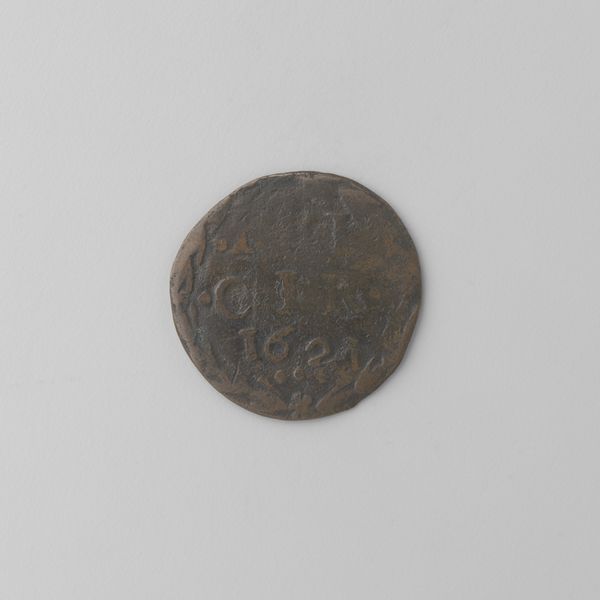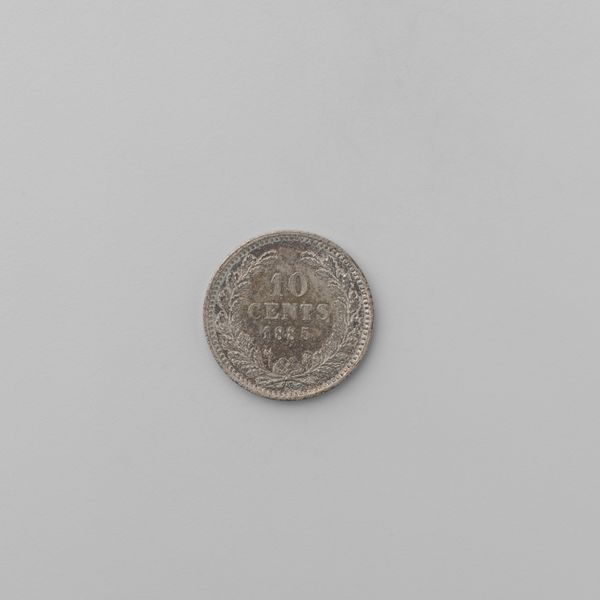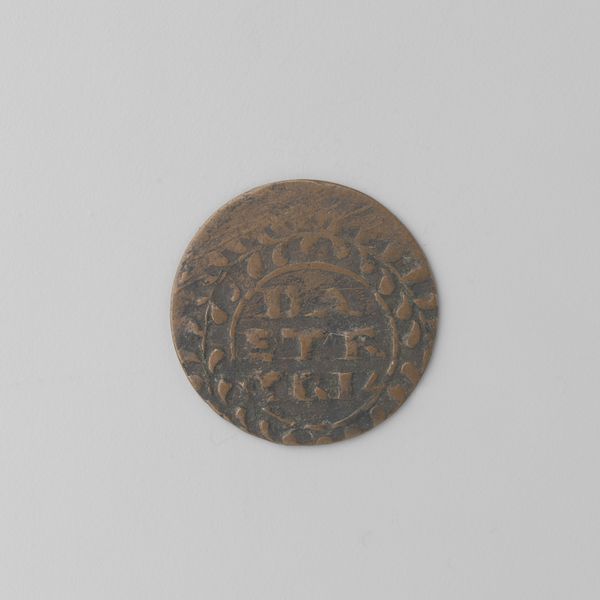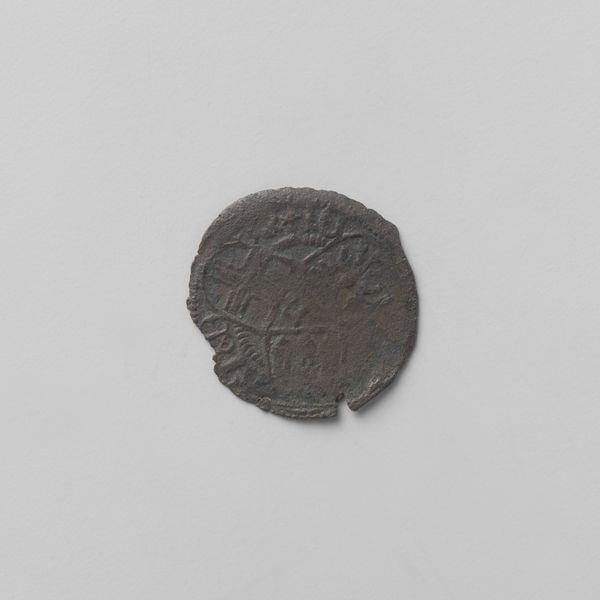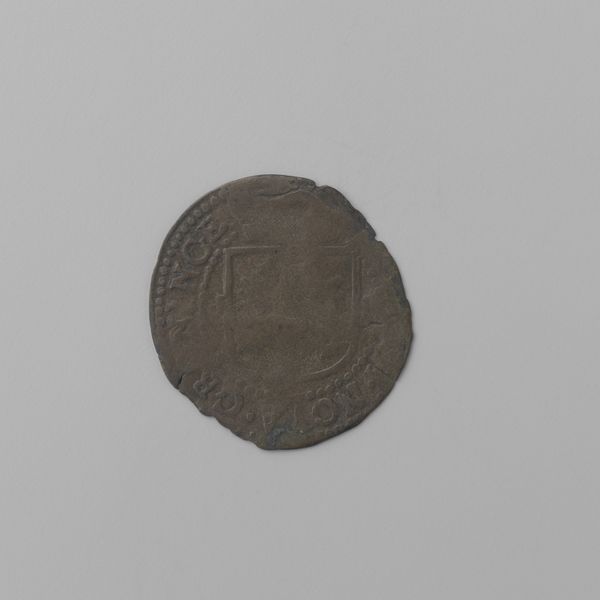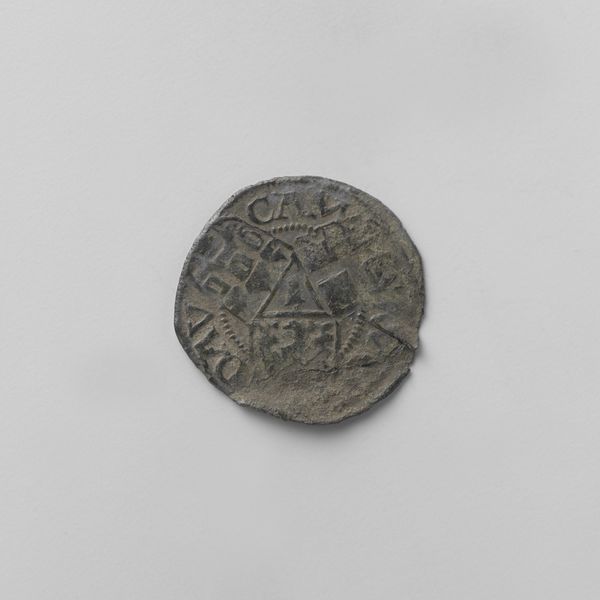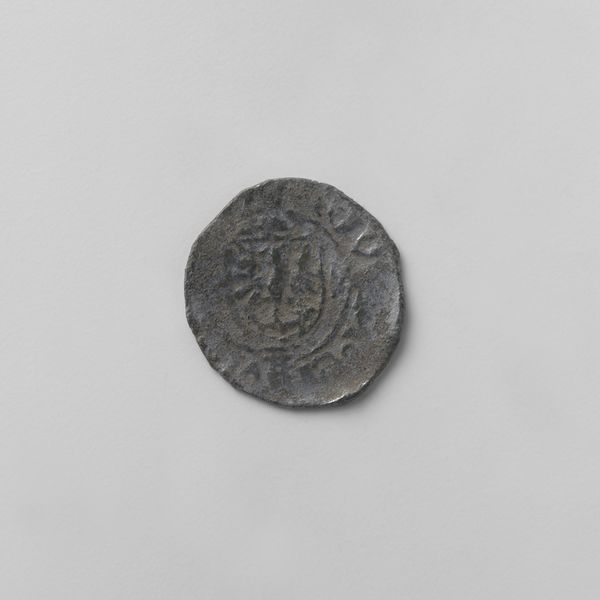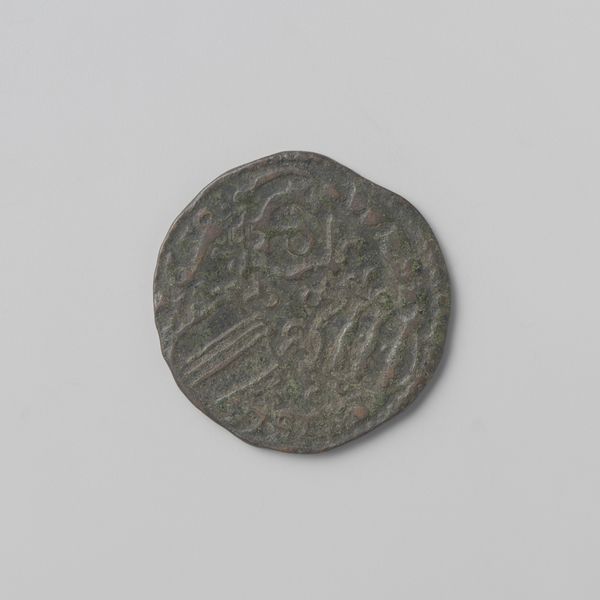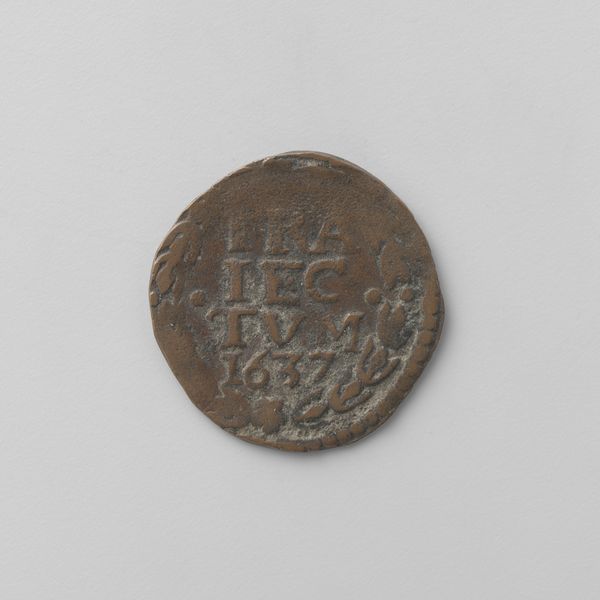
print, metal, engraving
#
dutch-golden-age
# print
#
metal
#
islamic-art
#
engraving
Dimensions: diameter 2.2 cm, weight 1.83 gr
Copyright: Rijks Museum: Open Domain
Curator: Looking at this Westfriese duit from 1658, what strikes you? Editor: The weight of history, definitely. The wear and tear… it feels like holding a tiny, timeworn portal. What exactly are we looking at in terms of function and purpose here? Curator: Indeed. This particular piece is a Dutch coin from the Golden Age, specifically a "duit," issued in West Friesland. These small copper coins were everyday currency back then. What draws my attention is not simply its economic role, but the symbolism embedded in such a small, ubiquitous object. Editor: Currency as propaganda, right? The symbols impressed on the metal—they carry intentional weight. Do you notice a conscious alignment with wealth or power encoded in its design? Curator: Absolutely! Notice the script; though appearing decorative, it strongly mirrors Arabic calligraphy common in Islamic art. This suggests a more significant cross-cultural exchange, specifically economic relations, which is reflected in this form, implying perhaps a subtle nod to the wealth derived from those interactions. It reminds us of the Dutch Republic’s vast colonial and trading networks during that era. Editor: And seeing it as such makes the artifact so charged. We are holding a tangible artifact connecting distant geopolitical realities. How did the local Dutch consumer internalize these visual symbols that appear Islamic? Was this an intentional strategy for West Friesland, do we know if this local dynamic was more concentrated, more accepted, more integrated here, compared to other districts? Curator: The presence of these influences in everyday items suggests some degree of normalization, reflecting the social and economic impact of global trade during that time. However, like other visual motifs, there likely existed complex and varied understandings that were contingent on diverse and emerging political issues that may arise from it as a political gesture, in what way that gesture means now compared to then. Editor: So the symbols, once vibrant indicators of wealth, commerce and an appeal to the exotic or global network, transform into echoes of an economy built on these relationships, a very concise memory of colonial legacies we can see here. This conversation alone has altered my perspective, reminding me that artifacts, no matter how humble, can open significant, perhaps complex interpretations when situated in their history and semiotic legacy.
Comments
No comments
Be the first to comment and join the conversation on the ultimate creative platform.
